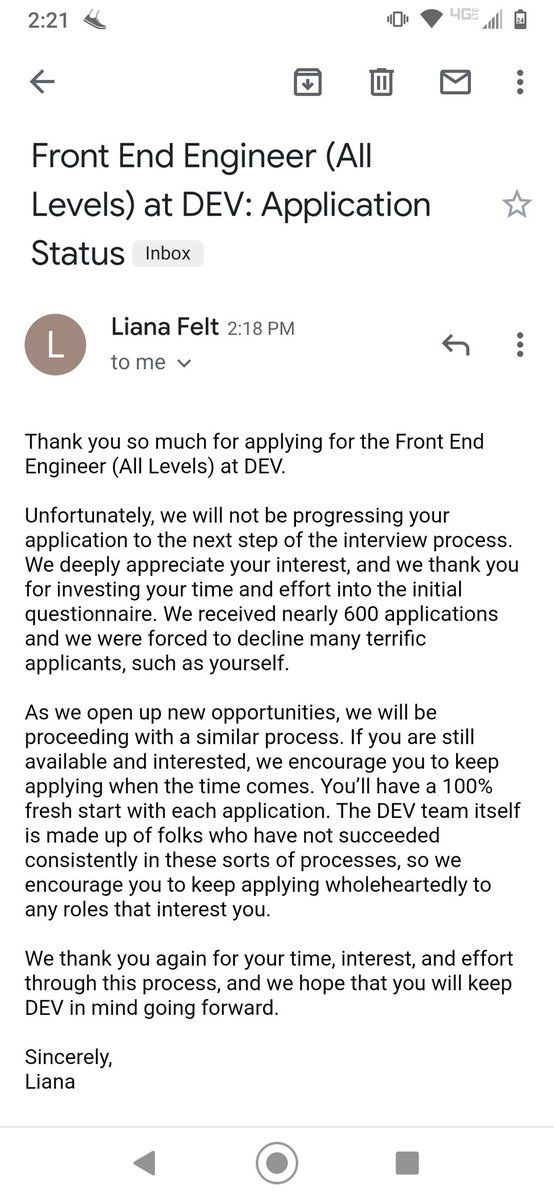One of the advantages of building a COSS company is that you have a built-in community of engaged engineers that are familiar with your codebase. Sourcing qualified candidates is typically a difficult task for most companies, but with active open-source contributors you have a lead on finding your next employee before you even post a job description.
The advantage of building through followers and community does come with added complexity you need to keep in mind as you run your hiring process. Often there are more interested contributors than open positions, and amazing contributors that aren’t the right fit for a full time role. The last thing you want to do as you scale your team is simultaneously lose great contributors.
Below are a few tips for the initial application process that can help you stay on good terms with contributors, even if you need to pass on them for a job with your company.
1. Transparency
Your hiring process should be as transparent as possible. Include an overview of what your company’s process will entail on your job site and/or within the job description. This will set expectations with candidates before they even start the application process. When you send out updates you can also include reminders of what the next step(s) will be. Providing this information up front will answer questions candidates may have (which reduces the emails you will need to answer) but also makes them feel assured and comfortable with the overall process.
2. Custom Screening Questions
Adding in additional questions on your initial application can be helpful for a few reasons. These could be specific to the role, your company values, or something else that can help better gauge incoming candidates. If you have a large community of developers that are going to be applying for the role, this is a great way to get more information up front and will help you reduce the candidate pool to a more reasonable number. Additionally, this offers more information than a resume and creates a more equitable hiring process.
3. Set Deadlines
Whether or not you have a public application deadline, let applicants know when they will hear back from you. You can include this information in the confirmation email after they submit their application. This piece of information is greatly appreciated by candidates. In addition to it making you look responsible and caring, it holds you accountable to get back to people in a timely fashion. Give yourself enough time to review applications, so you can get back to them on time! If you are delayed for any reason, send out an update with a revised date. Most companies do not include this type of information, so by doing this you are truly setting yourself apart.
4. Be Responsive
It is common for candidates to reach out to you during the hiring process with a variety of questions. Answer these emails promptly and with as much detailed information as you can. Many companies are unresponsive to these types of emails, so being responsive is another way to stand out. Answering these emails with detailed information will give them more confidence as they interview and be more reflective of who they are, ultimately giving you a better sense of their abilities.
Keep in mind that candidates are going to be evaluating your company just like you are assessing them. The top candidates you want to hire may have other offers that you are competing with. Being responsive and present to their questions and needs during the interview process will set yourself apart and signal to them that you will be an awesome boss and great employer.
5. Thoughtful Declination Emails
Always let people know if they aren’t moving forward in the process in a timely fashion. Often companies will not respond to initial applications, but sending a thoughtful message can actually create a positive impression. If you are using an applicant tracking system (which I strongly encourage), sending messages throughout each step of the process is fairly easy to do.
When you need to let someone know they won’t be moving on in the process, do this with kindness and care. Allow your company’s personality to come through and don’t make your email sound generic.It is important to be direct and make it clear that they aren’t moving forward within the first lines of your email. Two additional components to include that can make the bad news easier to digest are:
- Express gratitude for the time they took in the process.
- Encourage them to apply again. There is no need to have individual responses for everyone that applies and you can create a template reply that incorporates all of these elements. If it is a key contributor that you want to maintain a relationship with, you may want to tailor the email for them or send a follow up in addition to your templated response.
Even if you do everything right, you will still have some applicants that do not react positively to your process. When this happens, trust that they are not the type of person you’d want to employ and move on.
Your hiring process is a reflection of your company. Having a great hiring process will signal to all candidates that your company is an awesome place to work. Treat it thoughtfully and you will build a phenomenal team!





Oldest comments (0)